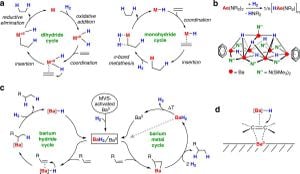Enterovirus D68 (EV-D68) is increasingly recognized as more than just a respiratory pathogen. New research unveils its capability to travel through the body, causing systemic inflammation and potential neurological complications, particularly concerning for children. This study, undertaken by researchers at Sigmovir Biosystems, presents compelling evidence of the association between EV-D68 and extracellular vesicles (EVs), highlighting the virus's significant role beyond the confines of the respiratory tract.
Historically, EV-D68 has been sporadically linked to respiratory illness, primarily affecting the young and healthy. Recent years, especially since 2014, have seen reports of alarming associations between EV-D68 and acute flaccid myelitis (AFM), leading to severe neurological symptoms. The need for clarity around the pathogenesis of this virus has never been more urgent.
The present study introduces innovative models using cotton rats (Sigmodon hispidus) to inquire whether and how the EV-D68 can disseminate beyond the respiratory tract, and what role EVs may play during this invasion. An alarming finding from this research was the detection of viral particles and replication intermediates of EV-D68 present not only within the respiratory system but also systemically circulating in the blood, potentially leading to neurological disease.
Utilizing intranasal and intraperitoneal infection routes, researchers monitored the progression of the virus. Their findings revealed significant levels of viral replication and infection within the respiratory tract shortly after administration. Less expectedly, EV-D68 was found to escape to other body areas, such as the spleen, and even gain entry to central nervous system (CNS) tissues when associated with EVs.
One of the most noteworthy observations was how the virus initiated strong inflammatory responses within the host. Enhanced levels of signals from immune cells, particularly interferons and cytokines known to mediate inflammation, were documented, indicating the body’s aggressive response to the infection. “EV-D68 infection induces strong pulmonary and systemic inflammation,” the authors noted, underscoring the potential ramifications for both individual patients and public health.
The introduction of EVs as vectors of viral transmission raises both new questions and avenues of exploration. EVs are small lipid-based particles released by cells and have been previously documented to possibly facilitate the escape of viruses like EV-D68 from site-specific infections. This association sheds light on the potential mechanisms through which EV-D68 can evade traditional immune responses and propagate beyond the respiratory system.
The researchers reported, “Systemic administration of EV-D68 or purified EV-D68-associated with EVs also resulted in virus gaining access to the CNS.” This not only illuminates the pathways of systemic dissemination but also signifies how respiratory infections can have additional, often overlooked, consequences, potentially leading to neurological conditions.
Despite the models used indicating the ability of EV-D68 to reach the CNS and cause symptoms of neurological disease, the research also identifies key differences between how this virus behaves compared to other pathogens known to induce AFM. The study mentions, “Only very young (neonatal) mice appear to develop neurologic disease,” highlighting the uniqueness of EV-D68’s characteristics.
The findings from this study are significant for healthcare practices and safety, particularly as variants circulate and the risk of new infections continues. Enhanced monitoring of EV-D68 infections, especially among young populations, has been emphasized as necessary to understand and mitigate emergent SEV-D68 cases globally.
To sum up, the research marks pivotal steps toward comprehending the multifaceted nature of EV-D68 infections. With continued tracking and study of EV-D68 and its pathways of infection, researchers may reveal improved methods for therapeutic interventions and gain insights on the virus’s pathology.
The study suggests, “The interface between respiratory and neurological disease may not be easily discerned,” indicating the complexity and overlap of symptoms showing the need for urgent research directions.



